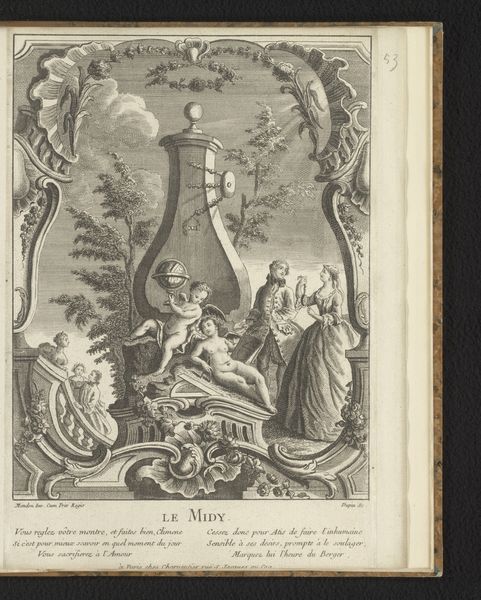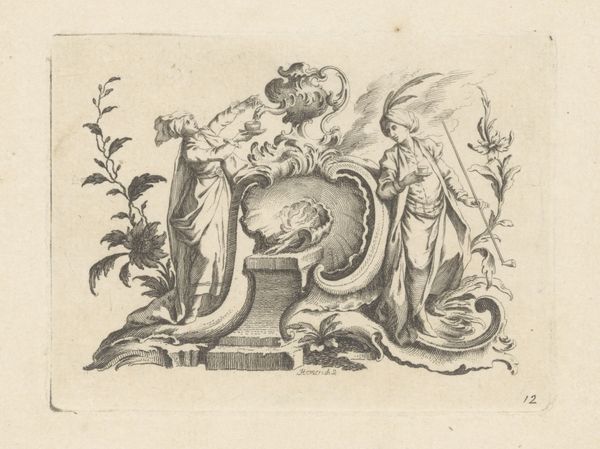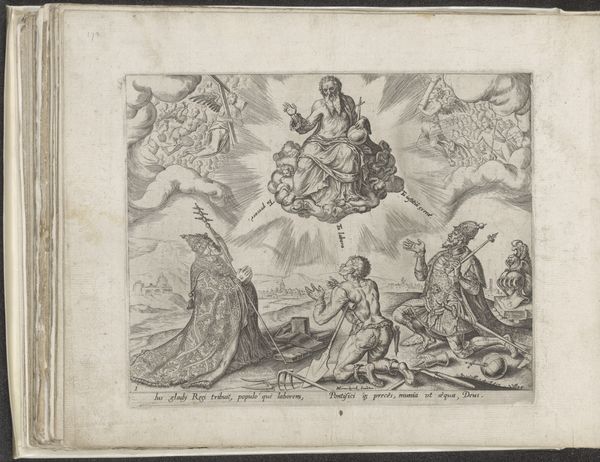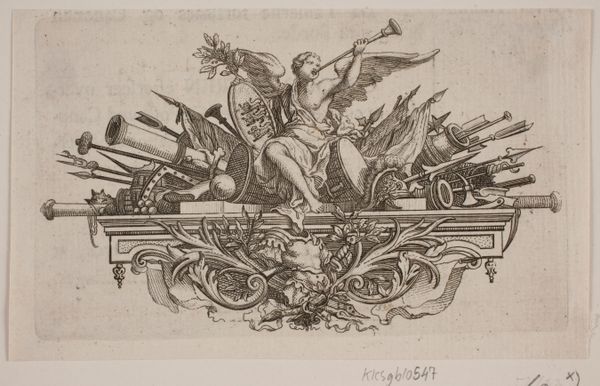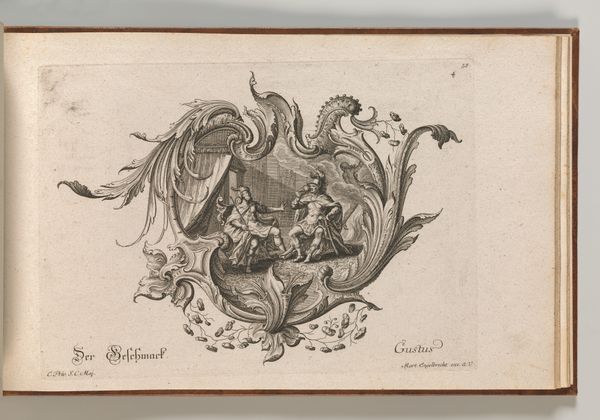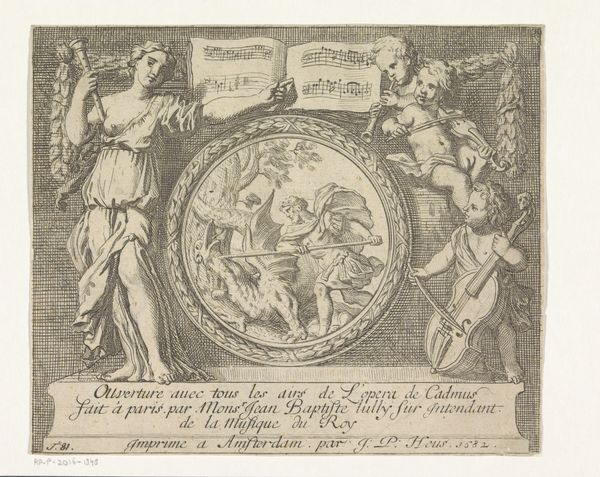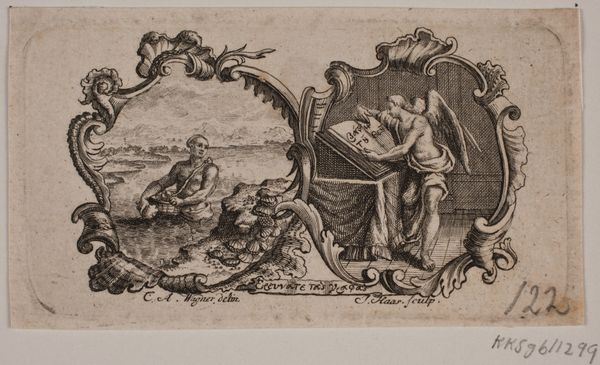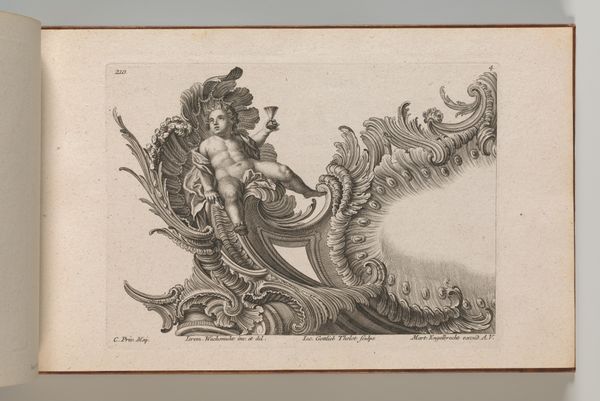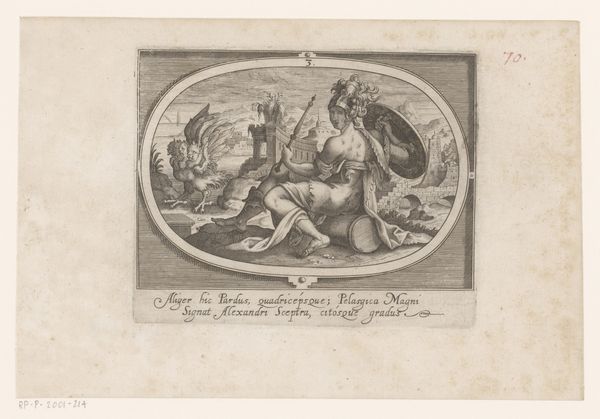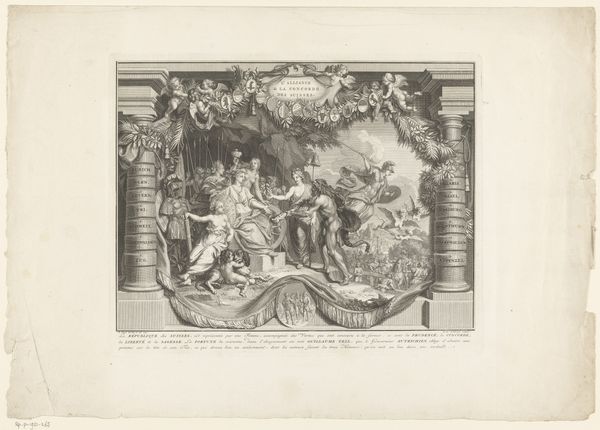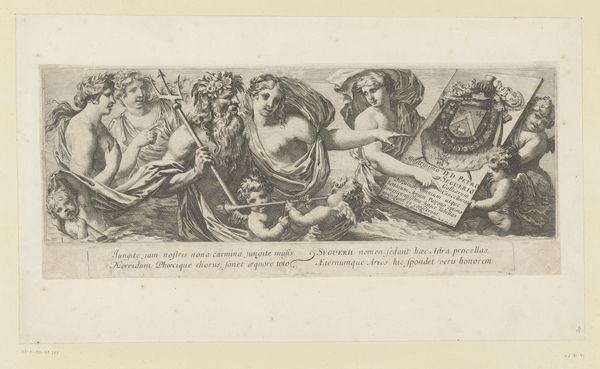
Design for a Rocaille Cartouche with the Figure of Justitia, Plate 2 from an untitled series with architectural cartouches and allegorical figures 1745 - 1755
0:00
0:00
drawing, print, engraving
#
drawing
#
allegory
#
baroque
# print
#
figuration
#
form
#
line
#
history-painting
#
engraving
Dimensions: Overall: 8 7/16 × 13 3/4 in. (21.5 × 35 cm)
Copyright: Public Domain
Curator: Here we have a striking engraving by Jacob Gottlieb Thelot, dating from about 1745 to 1755. It's titled "Design for a Rocaille Cartouche with the Figure of Justitia." Editor: The composition feels dense, almost suffocating. The level of ornamentation is incredible, isn't it? The sheer amount of labor that must have gone into this... Curator: Absolutely. Thelot was working during the height of the Rococo period, and that exuberance is evident here. These cartouches, often featuring allegorical figures, were incredibly popular as decorative elements within architecture and interior design. It reflected an era of ornate social life. Editor: Look at how Justitia, with her scales and sword, is almost bursting out of that swirling, shell-like frame. There is a real tension between the symbolic weight she carries and the lightness of the decorative elements surrounding her. It feels intentional, no? What statement is that labor of line work meant to create? Curator: Indeed. The contrast highlights the role of justice within society—as both a foundational element and an ideal elevated through artistry. These engravings were not just artworks but models, intended for workshops and artisans to reproduce and adapt for larger-scale projects. Editor: So, these prints almost function as early prototypes, demonstrating a sort of design intent to craftspeople? Curator: Precisely! And the inclusion of a cherubic figure on the left side hints at the divine endorsement of justice itself. But you are right; the materials, like the engraving itself, reveal a network of production and distribution, playing a key role in shaping aesthetic tastes across Europe. Editor: It's fascinating to consider how these engravings were used and re-used. From a single design object came potentially infinite applications, changing contexts with different purposes, which is really the core of craft. Curator: Thinking about the dissemination of design ideas, these allegorical cartouches played a role in shaping visual culture. And in today's society, allegorical art such as this still speaks to audiences who search it out. Editor: Well, this engraving opens up a way for us to contemplate how the social function of design relies so deeply on materials and making, in the past, and still today.
Comments
No comments
Be the first to comment and join the conversation on the ultimate creative platform.
